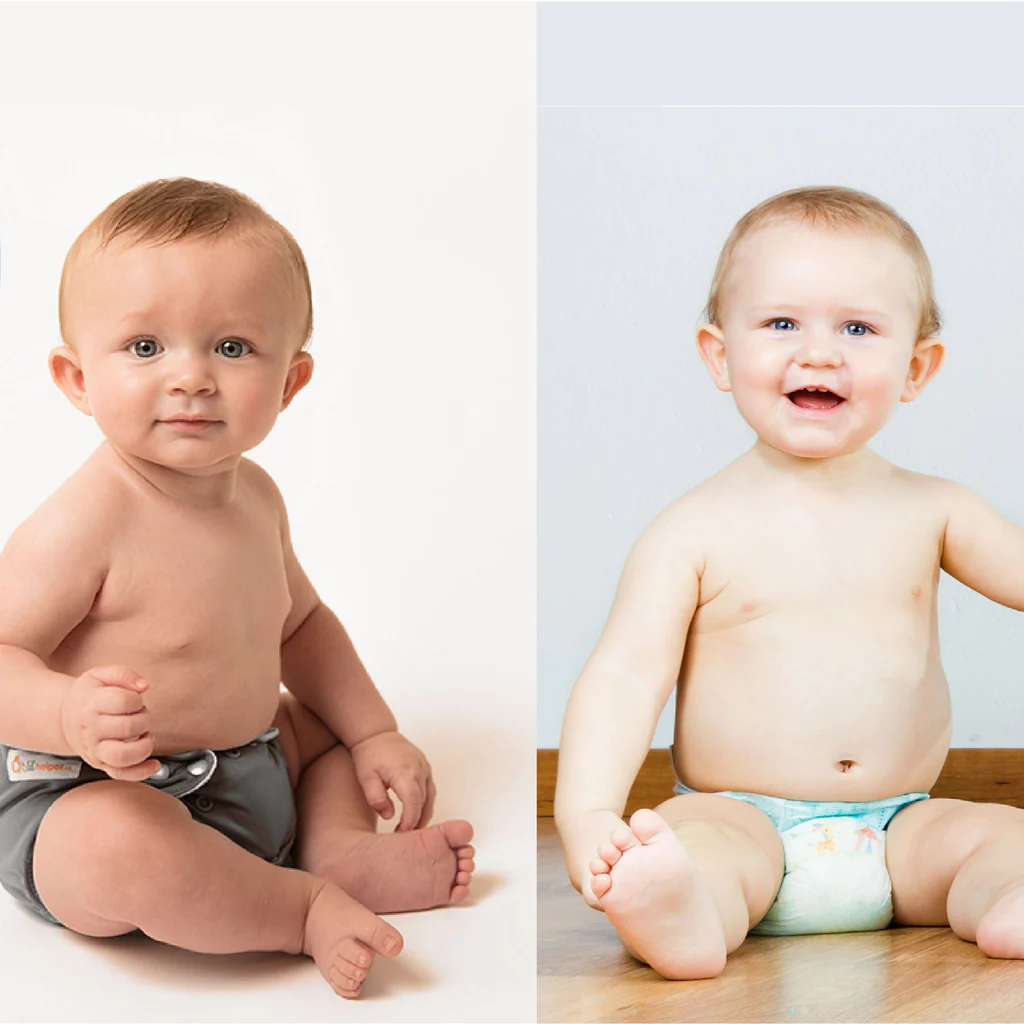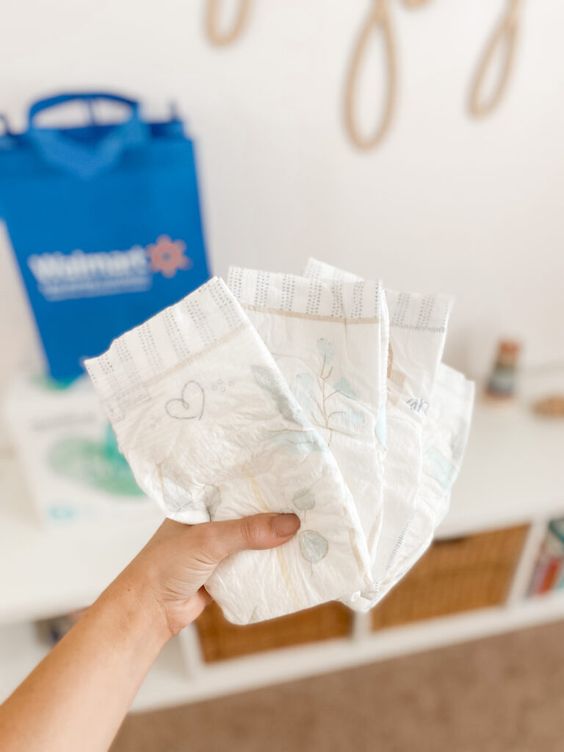Cloth vs. Disposable Diapers: Weighing the Options for Your Baby
The diapering decision is one of the first big choices parents make for their newborns. There are two main options: cloth and disposable diapers. Each has its own set of advantages and disadvantages to consider. This article explores the pros and cons of both cloth and disposable diapers to help you decide which option best suits your needs and preferences.diaper
Cloth Diapers: The Reusable Option
Cloth diapers are a reusable diapering option that has been around for centuries. They are made from absorbent fabrics like cotton, hemp, or bamboo and come in various styles like prefolds, fitted diapers, pocket diapers, and all-in-one diapers.
Pros of Cloth Diapers:
- Cost-Effective: While there’s an upfront investment in cloth diapers and accessories, they can be significantly cheaper in the long run compared to buying disposable diapers for the entire diapering period.
- Environmentally Friendly: Cloth diapers produce less waste compared to disposable diapers, which can take hundreds of years to decompose in landfills.
- Potential for Fewer Diaper Rashes: Some parents find that cloth diapers reduce the risk of diaper rash because they are more breathable than disposable diapers.
- Adjustable and Customizable: Cloth diapers come in various sizes and styles to fit your baby comfortably as they grow. You can also customize your diapering routine with different inserts and liners for absorbency needs.
Cons of Cloth Diapers:
- More Work: Cloth diapers require more work than disposables. You’ll need to change them frequently, wash them in a specific way, and deal with potential leaks or blowouts.
- Less Convenient: Cloth diapers are not as convenient as disposables. You can’t simply throw them away after use. They require planning for outings and travel.
- Learning Curve: Using cloth diapers has a learning curve. You’ll need to learn about different types of cloth diapers, washing routines, and troubleshooting leaks.
- Not Universally Popular: Cloth diapering is not for everyone. Some parents find the extra work and potential messiness unappealing.
Disposable Diapers: The Convenient Choice
Disposable diapers are the most popular diapering choice due to their convenience and ease of use. They are made from absorbent materials and come in various sizes to fit babies of all ages.
Pros of Disposable Diapers:
- Super Convenient: Disposable diapers are incredibly convenient. Simply put them on your baby, change them when soiled, and throw them away.
- Easy to Use: There’s no learning curve or special washing required with disposable diapers. They are perfect for busy parents or situations where convenience is key.
- Leakproof Protection: Disposable diapers offer excellent leakproof protection with superabsorbent materials that keep your baby dry and comfortable.
- Widely Available: Disposable diapers are readily available at most stores and online retailers, making them easy to find and purchase.
Cons of Disposable Diapers:
- Costly: Disposable diapers are a significant expense over the course of your baby’s diapering period. The cost can add up quickly, especially for larger sized diapers.
- Environmental Impact: Disposable diapers contribute significantly to landfill waste. They take hundreds of years to decompose and can leach harmful chemicals into the environment.
- Potential for Diaper Rash: Some babies experience diaper rash more frequently with disposable diapers due to the materials used and less breathability.
- Limited Customization: Disposable diapers offer little customization. You’re limited to the size and absorbency level offered by the manufacturer.
Making the Right Choice: Factors to Consider
Choosing between cloth and disposable diapers depends on several factors, including your lifestyle, budget, and environmental concerns. Here are some questions to consider:
- Lifestyle: How much time and effort are you willing to dedicate to diapering? Do you value convenience or are you willing to put in extra work for reusability?
- Budget: Consider the upfront cost of cloth diapers versus the ongoing cost of disposable diapers. Factor in the potential savings of cloth diapers over time.
- Environmental Impact: How important is environmental sustainability to you? If reducing waste is a priority, cloth diapers might be the better choice.
- Baby’s Skin Sensitivity: Does your baby have sensitive skin prone to diaper rash? If so, you might want to consider cloth diapers or choose disposable diapers with breathable materials.
Finding Common Ground: Hybrid Diapering and Other Options
There isn’t a rule that says you have to choose exclusively between cloth and disposable diapers. Here are some approaches that combine the benefits of both:
- Hybrid Diapering: This approach involves using both cloth and disposable diapers at different times. For example, you might use cloth diapers at home for cost-effectiveness and disposables for outings or overnight for convenience.
- Flushing Diapers: Flushing diapers are a relatively new option. These disposable diapers are designed to be flushable down the toilet, reducing landfill waste compared to traditional disposables. However, their compatibility with septic systems and potential environmental concerns require further investigation.
- Cloth Diaper Services: Cloth diaper services offer a convenient option for cloth diapering. They deliver clean diapers to your doorstep and pick up soiled ones, eliminating the laundry burden.
Beyond the Diaper Decision: Additional Considerations
Here are some additional factors to keep in mind when making your diapering decision:
- Diaper Rash Cream: Regardless of the diaper type you choose, having a good quality diaper rash cream on hand is essential. Look for zinc oxide-based creams to soothe and protect your baby’s skin.
- Diaper Wipes: Choose gentle and fragrance-free diaper wipes to avoid irritating your baby’s delicate skin. Consider reusable wipes for a more eco-friendly option.
- Changing Pad: A comfortable and wipeable changing pad is a must-have for diaper changes, regardless of the diaper type.
Conclusion: A Confident Choice for Your Baby’s Wellbeing
The decision of cloth vs. disposable diapers is a significant one, but it’s just one piece of the puzzle when it comes to your baby’s wellbeing. Here are some additional aspects to consider that contribute to a healthy and comfortable diapering experience for your little one:
- Frequent Changes: Regardless of the diaper type you choose, change your baby’s diaper frequently to prevent diaper rash and discomfort. Aim for changes every 2-3 hours or whenever the diaper feels wet or soiled.
- Skin Care Routine: A gentle and consistent skincare routine is essential for your baby’s delicate skin. Use warm water and gentle wipes or cloths during diaper changes. Pat the area dry and apply a barrier cream like petroleum jelly or zinc oxide-based cream to prevent irritation.
- Diaper-Free Time: When possible, allow your baby some diaper-free time each day. This exposure to air can help prevent diaper rash and promote healthy skin development. Place them on a waterproof changing pad during this time to avoid messes.
- Addressing Diaper Rash: If your baby develops diaper rash, identify the cause and take steps to address it. Frequent changes, proper cleaning, and barrier creams can help most diaper rashes clear up within a few days. Consult your pediatrician if the rash is severe or persists.
- Growth and Development: As your baby grows and develops, their diapering needs will change. You might need to adjust diaper size, absorbency level, or even consider transitioning from cloth to disposables (or vice versa) depending on your circumstances.
Ultimately, the best diapering approach is the one that keeps your baby clean, comfortable, and healthy. By considering all the factors discussed in this article, you can make a confident choice that aligns with your values, lifestyle, and your baby’s individual needs. Remember, a happy baby is a healthy baby, and a comfortable diapering routine contributes significantly to their overall well-being.




